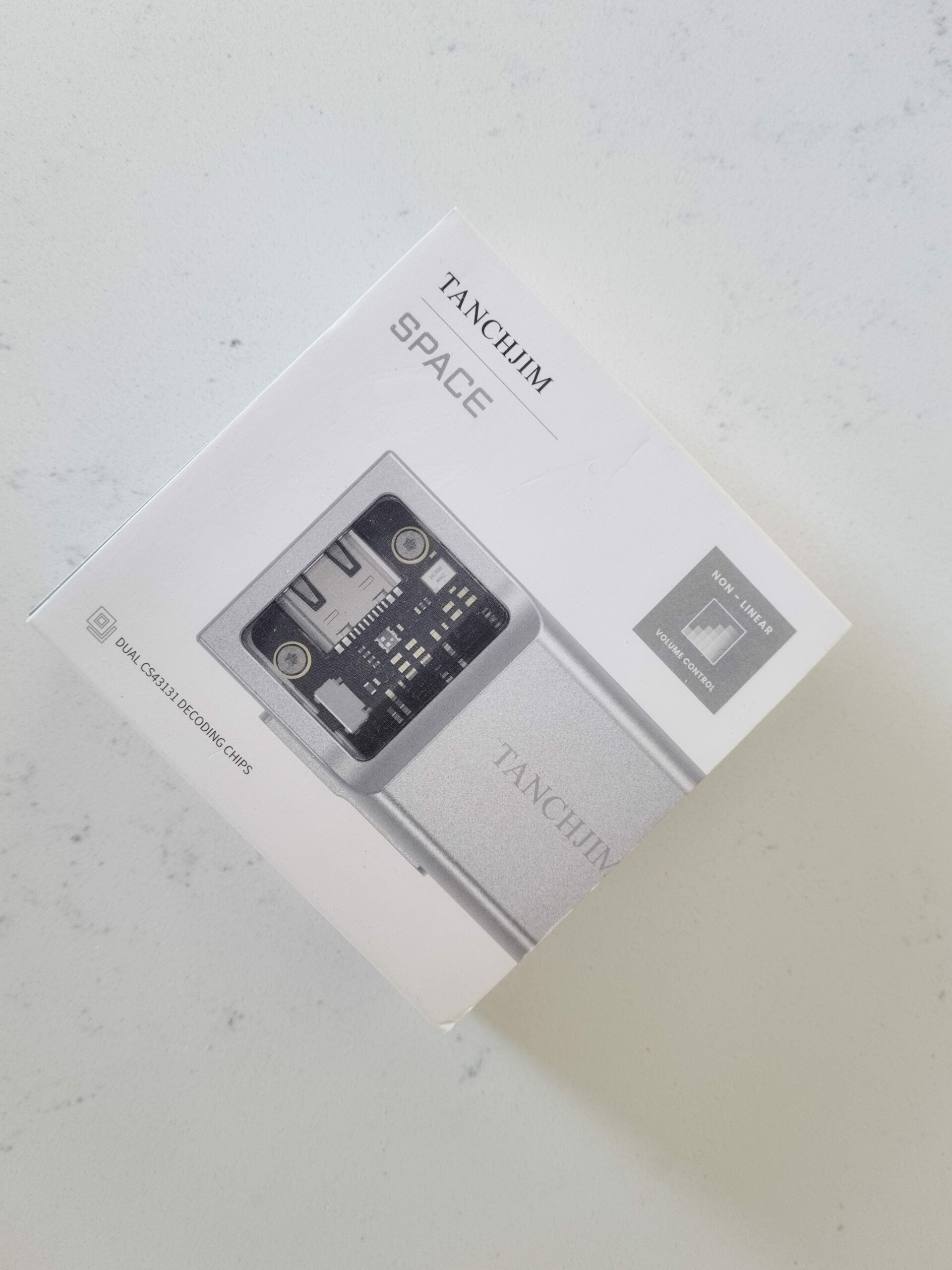Disclaimer: I would like to formally thank Tanchjim for graciously providing us with the Space for review. I am not affiliated with Tanchjim, and the views shared below reflect my honest thoughts surrounding the product.
Pros:
- Excellent portability and robust aluminium alloy frame
- Versatile implementation of “Real balanced” 4.4mm, unbalanced 3.5mm and USB-C
- Fully-independent volume adjustment with adequate steps
- Strong neutrality, dynamics, and enhanced spatial imaging
- Silent background with virtually no hiss
- Impressive output power for harder-to-drive transducers
Cons:
- Lack of USB-C to Apple Lightning cable
- Transparent display window lowers overall durability
- Independent volume resets after disconnecting from the source device
- Not quite substantive enough to drive harder-to-drive gear to optimal listening levels
Introduction
Ground control to Major Tom. We’ve reached the Earth’s orbit. Corny astronomy jokes aside, Tanchjim started as a small audiophile company in 2015, specialising in designing and developing IEMs that balance form and function.
Their widely-revered “Oxygen” and “Hana” reflects their credibility in the rapidly-growing audiophile marketplace. Their svelte and minimal aesthetics, exemplary technical performance and intelligent tuning decisions — are the superlatives commonly associated with Tanchjim. But the Chi-fi competition is heating up as new gladiators enter the Colosseum. Truthears, Moondrop, and Kinera are just three of a hundred brands floating in the claustrophobic audiophile space. A bane for brands, a boon for consumers!
Today, one growing segment of our hobby is the proverbial DAC/amp dongle. In the early 2010s, there was a nascent obsession with Digital Audio Players for an optimised, grab-and-go listening rig. Today, audiophiles are prioritising portability, convenience and, most importantly, sound quality. The “dongle” format proved to be the one-size-fits-all solution. More notably, the significantly lower costs of using a smart device as the source has democratised competent balanced and unbalanced audio components to the masses.
Today, we’re reviewing one such product: The Tanchjim Space, and dual-DAC equipped dongle compatible with all smart devices. Offering both balanced 4.4mm Pentaconn and unbalanced 3.5mm options, the Tanchjim Space is marketed, like contending products, as the Swiss-army knife of dongles.
Let’s take a critical look and assess how the Tanchjim Space fares compared to its rivals.
The Tanchjim Space is available at Tanchjim’s official website for 89.99 USD.
Technology
The Tanchjim Space houses dual Cirrus Logic CS43131 DACs in a balanced configuration, which natively decodes 32-Bit/768kHz PCM signals and native DSD256 audio signals. Offering two gain modes across balanced (4.4mm Pentaconn) and unbalanced (3.5mm SE), the Tanchjim Space can purportedly output a maximum of 230mW into a 32-ohm load. With a dynamic range of 132dB and <0.00018% of THD in both channels, audible artefacts are negligibly present and should not influence the final output signal.
Unboxing

Playing to the futuristic theme, the Tanchjim comes shipped in an extra-thick cardboard box with Tanchjim slate-grey colour palette, with the Space’s 3D render embossed into the lid of the box. The Space’s technical specifications (in greater detail) can be found at the back of the box.
Lift its lid, and you’ll be greeted by several instruction manuals and warranty information in a small envelope. Below the envelope, you’ll find the Tanchjim Space unit snugly seated into a piece of folded cardboard. The included male USB-C to USB-C cable and Male USB to female USD-C adapter can be found in the accessories compartment.
For a sub-$100 product, the Tanchjim Space is delivered in a premium package that belies its fair asking price. Save for the exclusion of an Apple-ready USB-C to Thunderbolt cable, the Tanchjim Space comes with a near-perfect set of peripherals for immediate, out-the-box usage.
Design and Build Quality

The Tanchjim Space follows the trend of a ubiquitous, dongle DAC/amp, boasting a small rectangular body with a gentle taper at the unbalanced/balanced output.
The Space is CNC-machined from an aluminium alloy with an anodised finish, fitted with a transparent display window at the USB-receiving end — a novel addition that allows nerds like myself to fawn over the internal components hidden beneath our beloved audio tech.
There’s also a noticeable seam running along the sides of the Space, indicating that the whole enclosure is made of two separate components stacked on top of each other. The single pentalope screw at the unbalanced/balanced ends confirms these suspicions.
Despite my observations, the Tancjim Space’s sleek contours, pocketable form factor, and impressive chassis finish make it a versatile option for grab-and-go use. However, the included display window is a noticeable point of failure that takes the product’s overall durability back a few steps.
Usage
The Tanchjim Space is a plug-and-play system and does not require downloaded drivers to be compatible with Windows 10 laptops or Android 10 smartphones. The independent volume control allows users to fine-tune the volume to their preferences, with a healthy number of steps surpassing your smartphone’s on-screen volume slider. The Space’s frame does not emanate much heat during each >1hr testing session.
However, I did notice a design flaw upon disconnecting and reconnecting the Tanchjim Space to my smartphone and laptop. Upon reconnecting, the Space does not retain the original volume settings from previous listening sessions. Instead, it resets and requires the user to apply the correct volume settings every time the dongle is disconnected. A mild annoyance, but not a dealbreaker.
Onto the next page for the rest of the review…




One Response
The volume memory was addressed in a firmware update, so that can be removed from the list of cons.